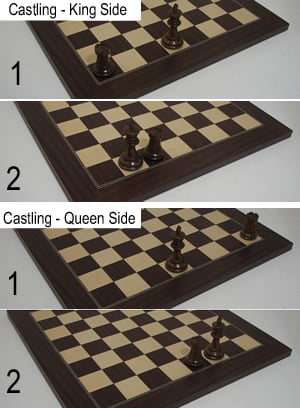
Note the value of White’s manoeuvre 2.Ra7: this forced the king to f8 and allowed White to play 3.Rf7+–f4 all with gain of tempo. Black’s only other move isįabulous coordination by the rook and bishop. The bishop still covers b7 so running with the king to c8 allows simply Rf8#. Wonderful! The bishop interrupts the Black rook’s access to the back rank without allowing a check on the d-file. This reduces Black’s defensive capabilities. The first drawback is that the rook has no access either to the b-file or the f-file as both b3 and f3 are covered by the White bishop on d5. If Black forces the White king to take a step back from d6, then he’s delirious with joy! He doesn’t need another check after that! There are however 2 drawbacks to the e3 square: one obvious, and one very subtle. The closer the rook is to the king, the shorter the checking distance… but in this case, checking distance isn’t a factor. Intuitively e3 feels riskier for Black than e2 or e1. Does it matter though where the Black rook checks from? Is there a difference between the squares e3,e2 and e1? Restricting the White bishop by checking from the back (3 rd rank)īlack’s rook has to be ready to check White’s king on the d-file if White’s bishop moves away from d5. This is a crucial operation: the goal of one of Black’s main defensive techniques in this ending – the “second rank defence” – is to prevent White from establishing control over the 7 th (or 2 nd) rank. White disrupts Black’s defensive structure via operations on the 7th rank. Black aims to defend by keeping his king central and moving his rook to the appropriate side of his king to block checks on the 8th rank from the White rookĢ. We will see how White manages this in a little while, but remember for now the 2 important points:ġ. Here the onus is on White again to make progress. Black’s rook should also be ready to check the White king on the d-file if White’s bishop moves forward to restrict the Black king still further. Black’s only possible reply in that case is to interpose his rook in between his king and White’s rook.īlack’s best defence is therefore to keep his king in the centre and move his rook to either side of the king where appropriate to block White’s checks from the 8th rank.


With the Black king in the centre, White can give checkmate from both sides of Black king. White can only checkmate Black by giving check on the 8th rank. Add a White rook running loose to the mix (which could give mate from a8 if the Black king were to run to b8, and mate from g8 if the Black king ran to f8) and you understand that Black’s chances of defending by running with his king are negligible. In both cases, the Black king must run for 2 moves from d8 before he gets a sniff of freedom. The Black king can only escape to the 2nd rank via b8–a7 and via f8–g7. The first point to understand about this piece configuration is how restricted the Black king is. 268 years later, grandmasters are still struggling to remember how he did it! The winning procedure is complicated so I will break it into smaller parts first before demonstrating the complete solution. In 1749, Philidor analysed this position to a win. I would like to start this examination of R&B vs R by looking at the most impressive piece of pre-computer analysis I’ve ever seen. Philidor Position, Rook and Bishop vs Rook In a subsequent article, I will examine some of Black’s defensive techniques as well as some of the traps that defenders typically fall into. In this article, I will explain the key Philidor winning position in detail. The game is available again in playable form at įor ease of language, White is always the stronger side (with the bishop) and Black is always the weaker side.

After I looked at what I’d written, I thought it might be of interest to others as well and that is the background to the next few articles. While reproducing the winning sequence of R&B vs R the other day, I suddenly caught myself thinking “But do I still understand what I’m doing here?” That was a trigger to spend some time explaining the ending to myself again. I don’t have time to do that sort of work anymore, but I do still try to refresh my recollections of a few key endings before a tournament. These encompassed typical endings in various material configurations, and of course R&B vs R was one of them.
#Rook king checkmate professional#
Part of my routine daily work as a chess professional was to run through a set of about 100 endings and make sure they were committed to memory.


 0 kommentar(er)
0 kommentar(er)
